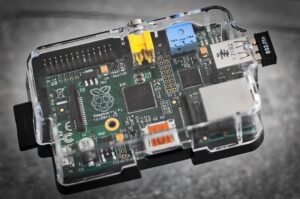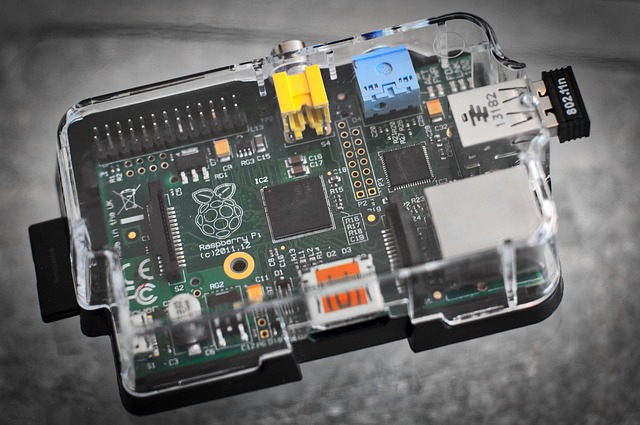Alpine Linux offers a highly streamlined and secure experience for both expert system administrators and novice users within the Linux ecosystem. It comes with the Xfce desktop environment, known for its efficiency and simplicity, which provides a user-friendly interface ideal for beginners. The LXDE window manager complements this by offering swift performance and a minimalist approach that enhances productivity. Alpine's APK package management system is straightforward, allowing users to easily install applications they need. The operating system emphasizes a clean and distraction-free workspace, which is particularly beneficial for newcomers looking to learn effectively. Customization options are available for those who wish to personalize their experience without compromising the system's lightweight nature. Alpine Linux stands out with its performance orientation and active community support, offering comprehensive documentation and resources that ensure a smooth transition from other operating systems like Windows or macOS. Users can further optimize their desktop environment by installing additional tools and managing settings to suit their preferences, ensuring a productive and personalized Linux experience with Alpine.
Diving into the world of open-source software can be an exhilarating journey for new users. Alpine Linux presents a lightweight and secure operating system that caters to beginners with its user-friendly desktop environments. This article guides novices through the essentials of Alpine Linux, highlighting its intuitive interface and key features designed to simplify the experience. From navigating the desktop environment to employing practical tips and tricks, users will find a seamless pathway into the realm of Alpine Linux. Embrace the opportunity to master a system that combines efficiency with accessibility.
- Unpacking the Essentials of Alpine Linux's User-Friendly Desktop Environment for Beginners
- Navigating the Interface: Key Features and Tools Simplifying Alpine Linux for Novice Users
- Tips and Tricks for Enhancing Your Alpine Linux Desktop Experience as a Newcomer
Unpacking the Essentials of Alpine Linux's User-Friendly Desktop Environment for Beginners

Alpine Linux stands out as a lightweight and secure distribution that caters to both seasoned system administrators and newcomers to the Linux ecosystem. One of its most user-friendly desktop environments is Xfce, which is pre-installed by default. This environment is designed for efficiency and simplicity, making it an excellent choice for beginners who are looking for a straightforward yet functional experience. The Xfce desktop provides a clean and intuitive interface that allows users to navigate system settings with ease, thanks to its minimalist approach and well-organized configuration tools. For those just starting out, the essential components of Alpine Linux’s desktop environment are readily accessible without overwhelming the user with unnecessary complexities. The default window manager, LXDE, complements Xfce by offering a fast and responsive experience that enhances productivity. Additionally, Alpine Linux’s package management system, known as apk, is straightforward to use, ensuring beginners can install applications with minimal hassle. This combination of user-friendliness, performance, and security positions Alpine Linux as an attractive option for individuals looking to explore the world of Linux without the steep learning curve typically associated with other distributions. The emphasis on simplicity and reliability in Alpine Linux’s desktop environment makes it a practical choice for beginners who value a clean and distraction-free workspace, allowing them to focus on learning and using their system effectively.
Navigating the Interface: Key Features and Tools Simplifying Alpine Linux for Novice Users

Navigating the interface of Alpine Linux presents a straightforward and efficient experience for beginners, thanks to its minimalist approach and clear layout. The desktop environment, by default LXDE, is designed with simplicity in mind, featuring a window manager that offers intuitive navigation through virtual desktops. Users new to Alpine will find that the essential tools are easily accessible, often just a click or two away via the application menu or the panel icons. The file system organization is logical, and the package management system, APK, simplifies software installation and updates, guiding users through clear on-screen prompts. For those who prefer a more graphical approach to system administration, tools like `lxc` for containerization and `htop` for system monitoring are available and user-friendly, helping beginners manage their systems effectively without delving into complex command-line operations.
For novice users, Alpine Linux can be made even more approachable with additional software that enhances the user experience without cluttering the interface. For instance, installing a desktop environment like XFCE or LXQt can offer a balance between simplicity and functionality. These environments provide a range of configurations that allow users to tailor their workspace to their needs while maintaining the lightweight nature of Alpine. The inclusion of applications like Synaptic for package management further streamlines the process, making Alpine Linux an excellent choice for those looking to transition from Windows or macOS without sacrificing performance or control over their system. Additionally, the active community and comprehensive documentation ensure that help is readily available, whether through forums, guides, or direct support.
Tips and Tricks for Enhancing Your Alpine Linux Desktop Experience as a Newcomer

For those new to Alpine Linux, tailoring your desktop environment to suit your needs can significantly enhance your experience. To begin with, consider installing a lightweight yet versatile desktop environment like XFCE or LXDE. These environments are user-friendly and resource-efficient, making them ideal for the minimalist approach of Alpine Linux. Once installed, take advantage of the available settings managers to customize your workspace. Adjust your panel’s layout, set up your preferred launcher, and configure your window management keys to navigate effortlessly between applications.
Furthermore, utilizing Alpine’s package manager, APK, you can easily install additional tools and utilities that cater to your workflow. For instance, tools like `dcopager` or `xwallpaper` can be used to manage desktop wallpapers in a more dynamic way. To streamline system operations, consider adding frequently used commands to your `.bashrc` or using graphical tools like Sytema for system management tasks. Additionally, exploring Alpine’s repositories will introduce you to a wide array of applications that are pre-configured and ready to use out of the box. Regular updates ensure that your system remains secure and up-to-date, which is essential for maintaining a stable desktop environment. By personalizing your setup and taking full advantage of Alpine Linux’s capabilities, you can create a desktop experience that is both productive and enjoyable.
Alpine Linux presents a robust yet accessible option for beginners in the realm of Linux desktops. This article has shed light on the essentials, interface navigation, and practical tips tailored to new users. By leveraging the user-friendly desktop environment, even novices can comfortably navigate and personalize their Alpine Linux experience. With a focus on key features, tools, and effective strategies, beginners are well-equipped to explore the potential of Alpine Linux without feeling overwhelmed. As you delve into this system, remember that the journey from newcomer to proficient user is an incremental one, made smoother by the thoughtful design and community support that define Alpine Linux.


























